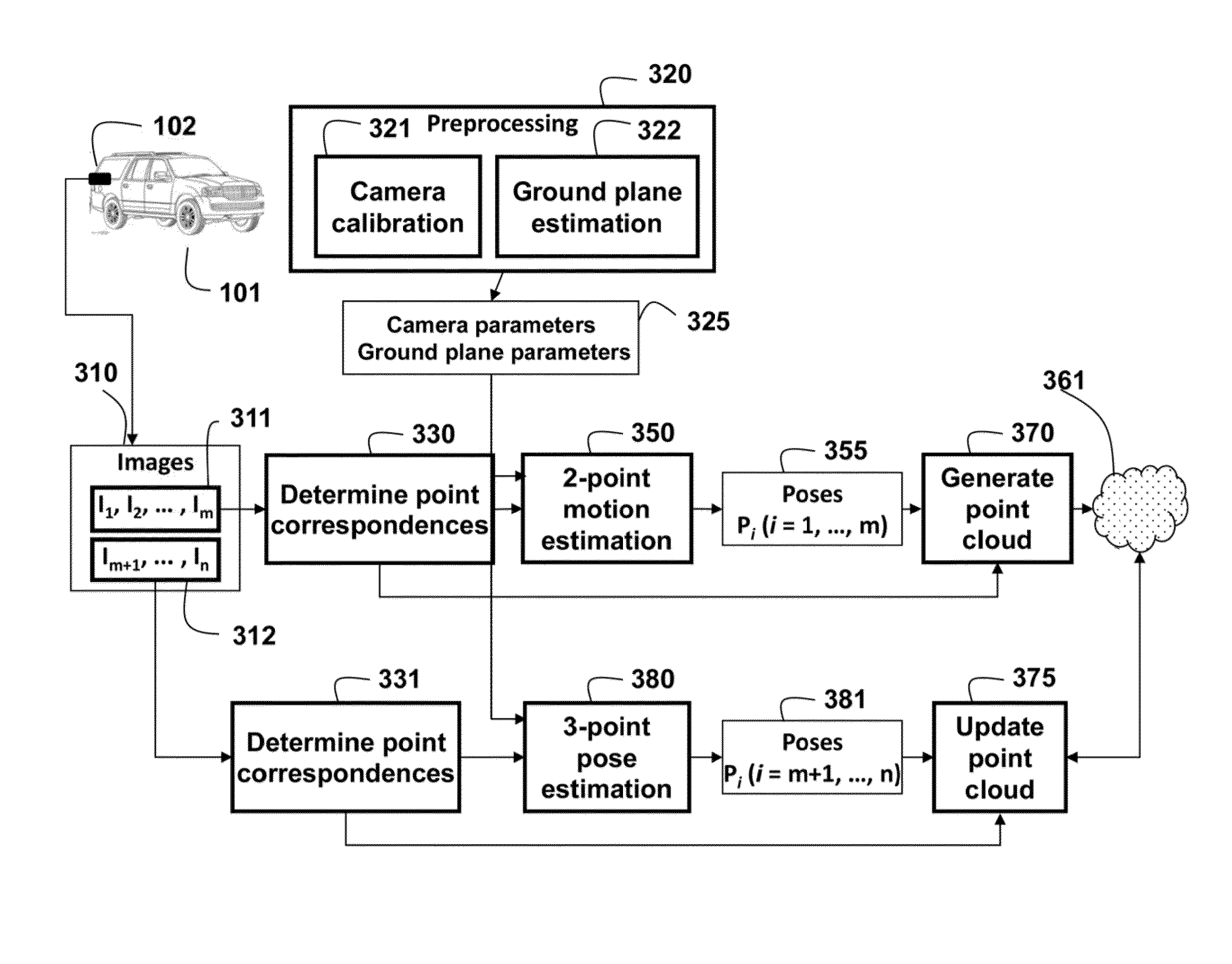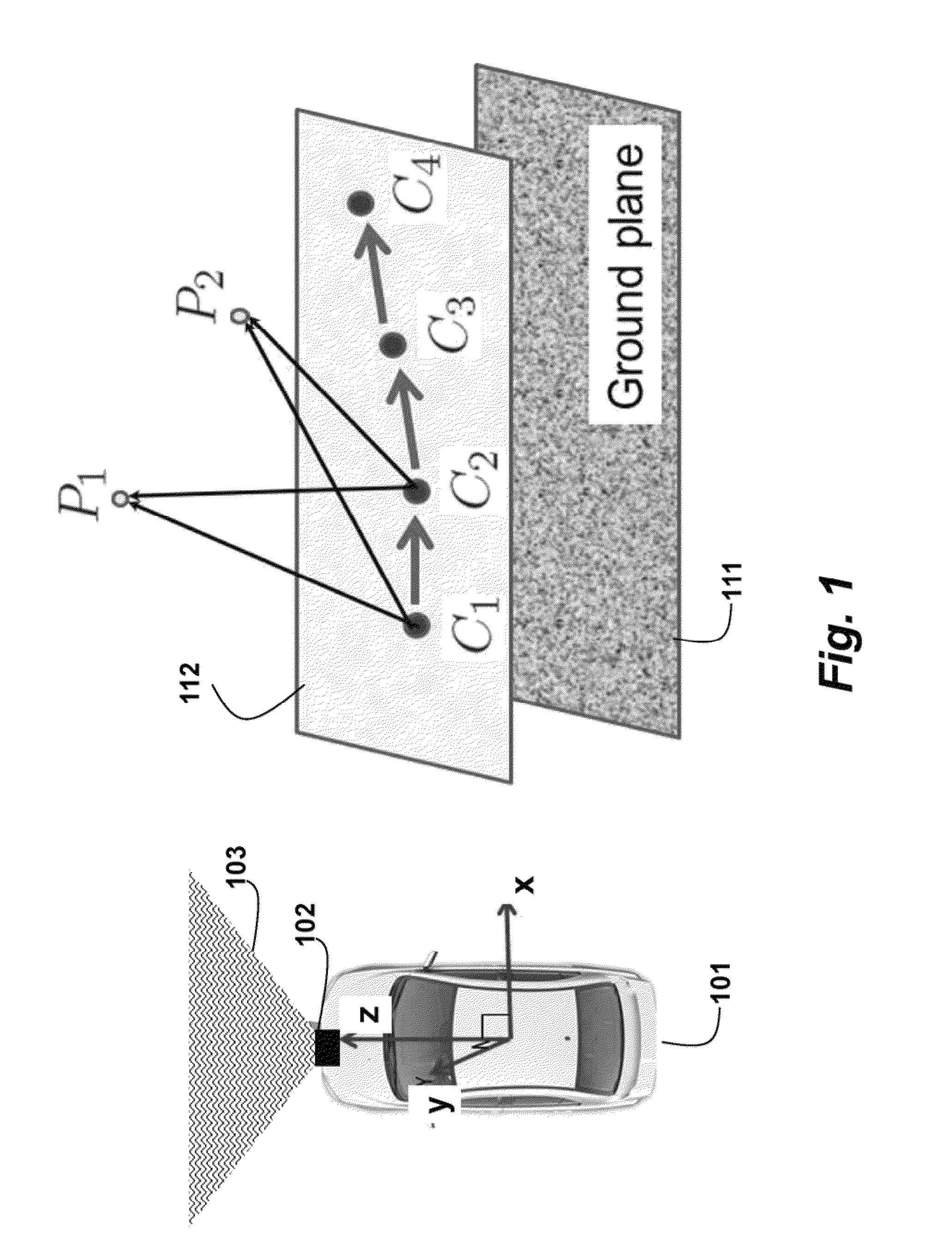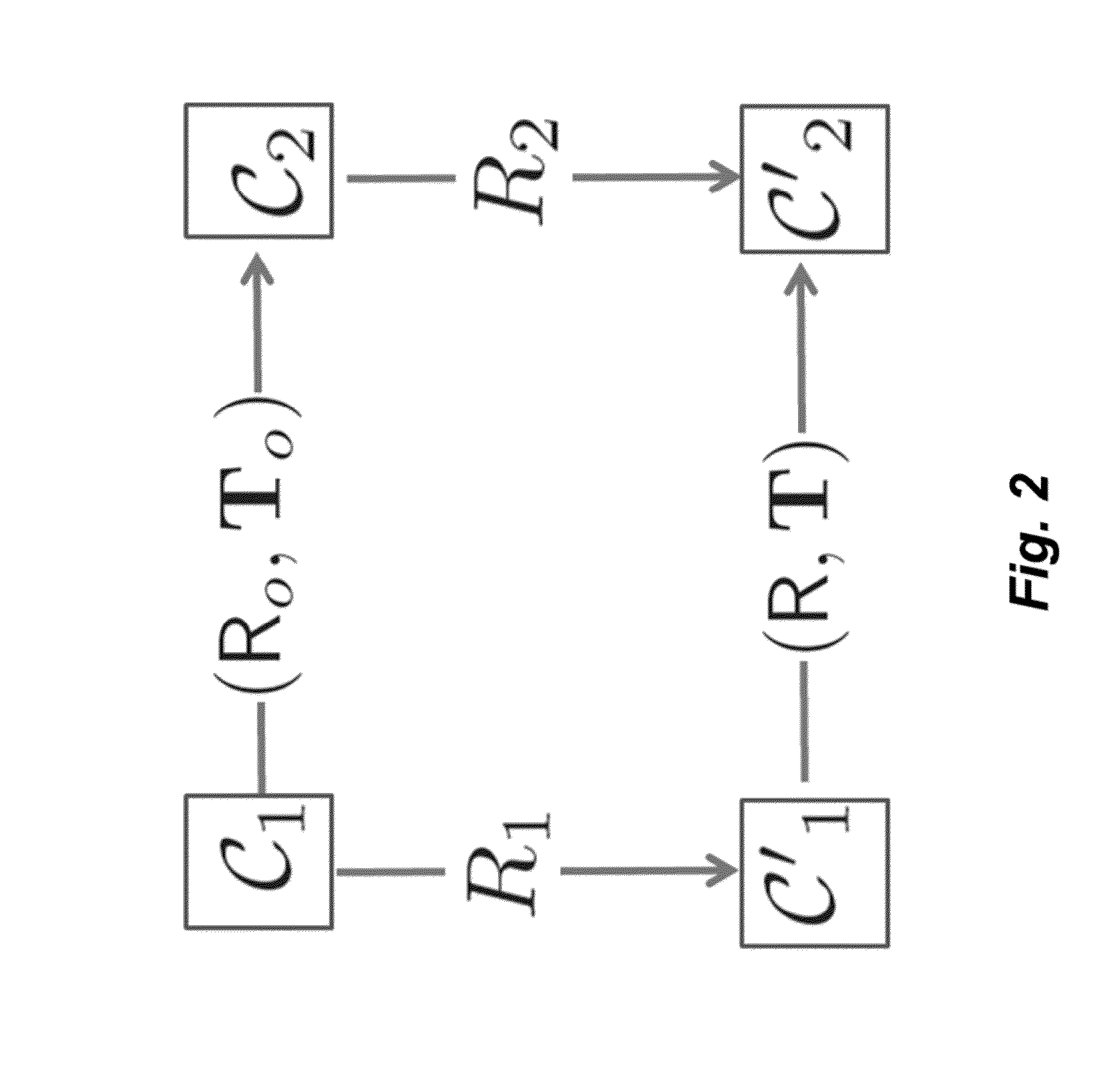Method and system for determining poses of vehicle-mounted cameras for in-road obstacle detection
a vehicle-mounted camera and obstacle detection technology, applied in image analysis, image enhancement, details involving processing steps, etc., can solve problems such as high computational complexity of slam-based methods, inability to meet real-time applications, and inability to use real-time applications
- Summary
- Abstract
- Description
- Claims
- Application Information
AI Technical Summary
Benefits of technology
Problems solved by technology
Method used
Image
Examples
Embodiment Construction
[0026]The embodiments of the invention provide a method for determining poses of a camera from a sequence of images in a video acquired of an environment 103 near a movable object by the camera mounted on the object. The object can be a car, truck, bicycle, taxiing plane, robot, person, etc. Because the camera is in a fixed relationship with respect of the object, the pose of the camera can be used to determine the pose of the object, the motion of the object, as well as potential obstacles near the object.
[0027]As generally defined herein, a pose includes a location and orientation of the camera: The translational location T and angular orientation R each can have up to three degrees of freedom.
[0028]Motion Estimation
[0029]FIG. 1 shows two-point motion estimation for planar motion of a vehicle 101. The motion of the vehicle is substantially coplanar to a ground plane 111. The camera 102 moves on a plane 112 parallel to the ground plane along coordinate systems C1, C2, C3, C4. The f...
PUM
 Login to View More
Login to View More Abstract
Description
Claims
Application Information
 Login to View More
Login to View More - R&D
- Intellectual Property
- Life Sciences
- Materials
- Tech Scout
- Unparalleled Data Quality
- Higher Quality Content
- 60% Fewer Hallucinations
Browse by: Latest US Patents, China's latest patents, Technical Efficacy Thesaurus, Application Domain, Technology Topic, Popular Technical Reports.
© 2025 PatSnap. All rights reserved.Legal|Privacy policy|Modern Slavery Act Transparency Statement|Sitemap|About US| Contact US: help@patsnap.com



